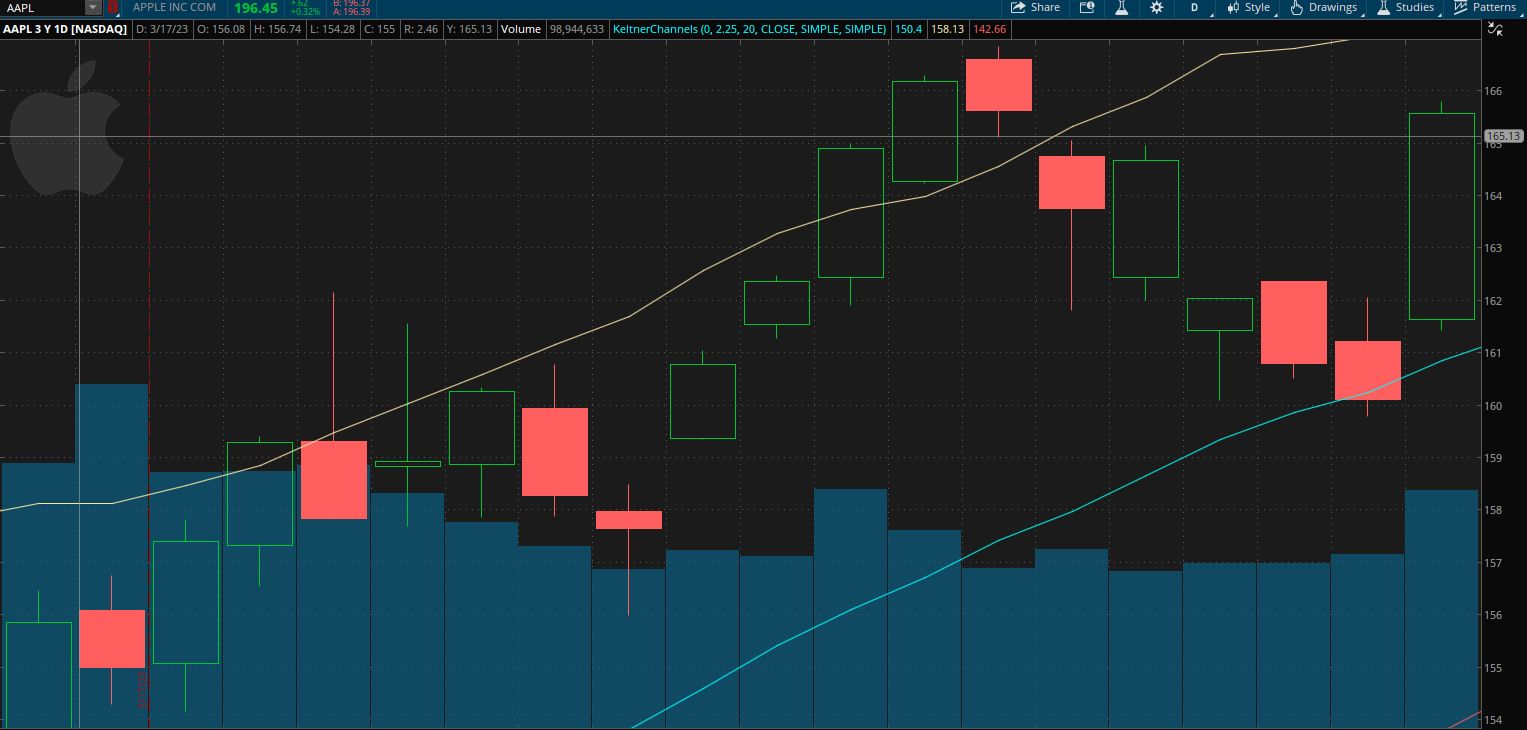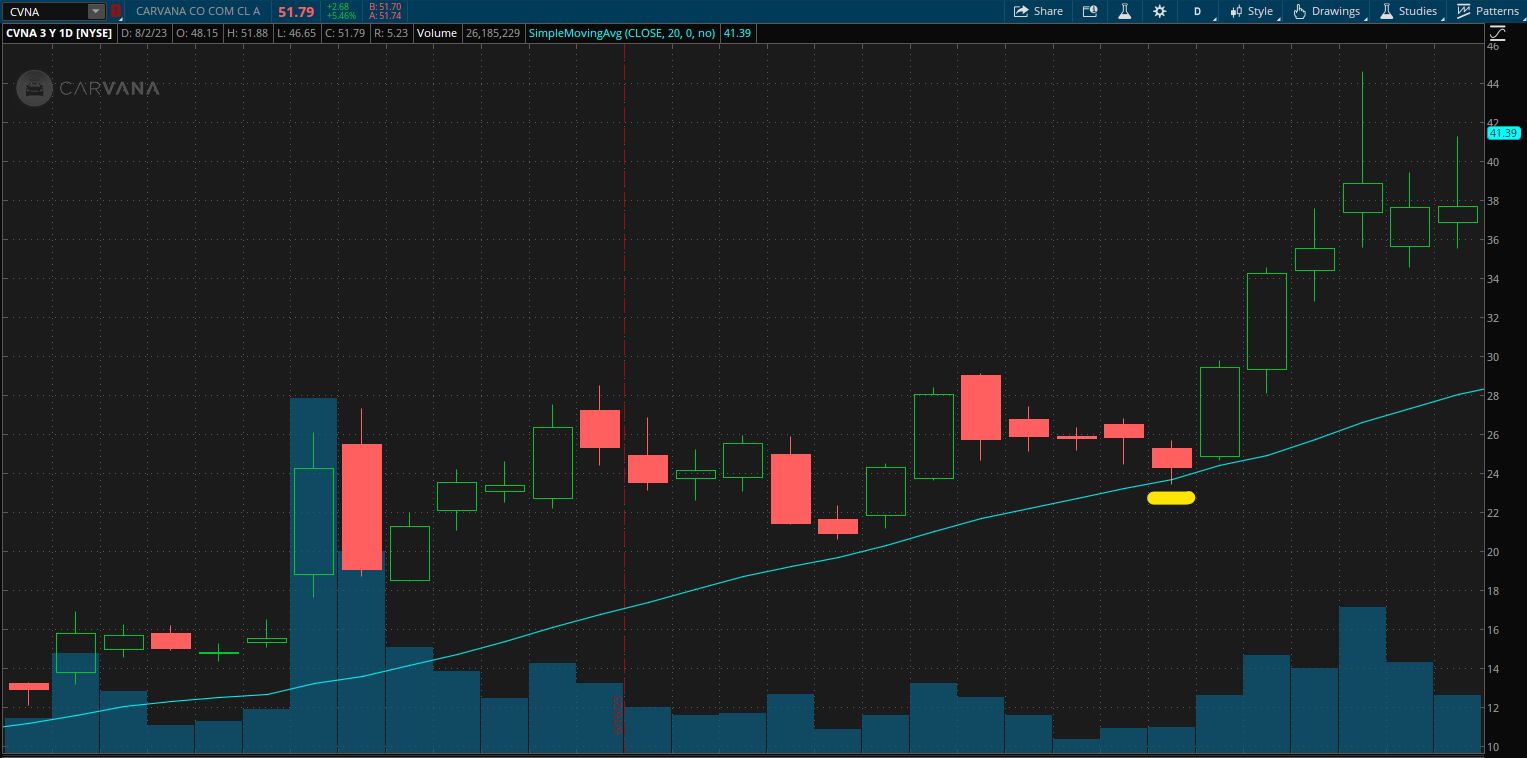Pullback Trading Strategy for the Stock Market
Stock Market Guides is not a financial advisor. Our content is strictly educational and should not be considered financial advice.
Pullbacks in the stock market are popular among investors and can be the basis for a variety of trading strategies.
If you are looking to learn a pullback trading strategy or want to understand more about pullbacks in general, then you're in the right place.
This article will offer a complete pullback trading strategy that can be used by active traders. First, let's go over how pullbacks work.
What Exactly Is a Pullback?
A pullback in stocks refers to price activity that occurs during an uptrend in the stock market.
It happens when a stock's price is trending upward, but temporarily slows down and comes down before potentially continuing its uptrend. It is visible as a chart pattern on a stock chart.
In simpler terms, a pullback is a short-term dip or decline in the price of a stock that is otherwise in an upward trend.
That image shows an example of a pullback on a stock chart for Apple.
Stock Market Guides

Stock Market Guides identifies swing trading opportunities that have a historical track record of profitability in backtests.
Average Annualized Return
79.4%
Example of a Pullback Trading Strategy You Can Use
For this particular pullback trading strategy, we're going to use a daily chart. That means it would be a swing trading strategy.
We're also going to use a simple moving average line that is set to 20 days.
That image shows a stock chart for Carvana. The blue line on the chart represents the 20-day Simple Moving Average.
Entry for the Pullback Trading Strategy
The entry criteria for our pullback trading strategy is very simple. We're simply looking for 15 days in a row of the price being above the blue line, and once we know that's happened, we buy if the price gets to the blue line.
You can see in the image above that at the yellow mark, the price is touching the blue line after having been above it for 15 days in a row.
The yellow mark therefore represents the entry signal for this trading strategy.
If an investor had bought the stock using the trading strategy's entry criteria, you can see that he or she might have profited since the stock price generally moved up thereafter.
It's important to note that the value of the middle moving average line is not finalized until the trading day is over. For the purposes of this trading strategy, we will project the value of the middle moving average line by taking the difference of the prior two days' moving average values and adding it to the prior day's moving average value.
This gives a precise number where an entry order can be placed that doesn't depend on waiting for the final value of the moving average line for the current day.
You can also buy options to carry out this trading strategy. For the purpose of this article, we will use stocks as the basis for defining the rules of the strategy.
Exit for the Pullback Trading Strategy
There are a lot of possibilities here for the exit.
For any given trading strategy, it can be helpful to define three different criteria for the exit: profit target, stop loss, and time limit.
Not everyone uses all three, and that's totally fine. Ultimately you can set these values however you want. But for the purposes of this strategy, we will define all three:
Profit Target
We will set the profit target at 20% higher than the entry price.
The entry price was $23.70 in this example, so the profit target was set as follows:
20% of 23.70 = .2 * 23.70 = $4.74
$23.70 + $4.74 = $28.44
Our profit target will therefore be $28.44 and we can set up a sell limit order at that price.
Stop Loss
We will set the stop loss at 20% lower than the entry price.
The entry price was $23.70 in this example, so the stop loss was set as follows:
20% of 23.70 = .2 * 23.70 = $4.74
$23.70 - $4.74 = $18.96
Our stop loss will therefore be $18.96 and we can set up a stop order at that price.
Time Limit
We will set the time limit as one week since this is a swing trade. If the stock has not hit either the profit target or stop loss by the time limit, then we will close the trade manually at the opening bell seven calendar days after entry.
This video offers more information about the pullback trading strategy we're describing:
Performance of This Pullback Trading Strategy
If we apply this pullback trading strategy to the Carvana example above, the results would be as follows:
The entry price shows as being $23.70.
Within a day after the entry, the price of Carvana reached the profit target in our example: $28.44. That means this trade could have made a profit of 20% on invested capital.
This Pullback Trading Strategy Doesn't Always Win
The example above shows a case where this strategy might have generated a profit.
But that's just one example, and it's not enough to say with certainty that this Pullback trading strategy would be profitable for you in the long run.
There are plenty of examples of this strategy losing as well, and ultimately the only way to be sure that any given trading strategy has a track record of success is to look at how it's performed in the past.
How Do You Find Stocks That Have Pullbacks?
You can find them by using our Pullback scanner. It's a free tool we offer here at Stock Market Guides. It uses our proprietary scanning technology to find stocks that have pullbacks.
Here's how the scanner results look:
That tool ensures that you don't have to waste time flipping through stock charts manually to find stocks with pullbacks.
Our Research on Pullback Trading Strategies
Our specialty here at Stock Market Guides is researching how trading strategies have performed historically. We've spent a lot of time researching pullbacks in particular.
We did backtests and determined which pullback settings may have been most profitable historically.
We also studied which stocks responded best to pullback trade opportunities.
Here is some data that shows how a proprietary pullback trading strategy we created has performed historically according to backtests:
Wins
---
Losses
---
Win Percentage
---
Annualized Return
---
Anyone who signs up for our swing trading scanner service will be able to see stocks that qualify for that trading strategy in real time.
Learning More About Pullbacks
You can contact us any time if you would like to ask any questions about pullbacks or about trading in general.
Join Our Free Email List
Get emails from us about ways to potentially make money in the stock market.


